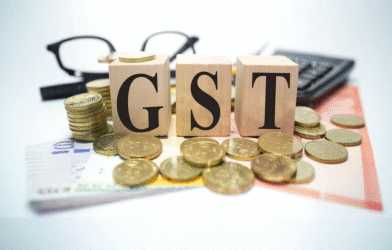India’s direct tax system is facing an unusual contrast this year. While the government’s net direct tax collections rose by 9.18% to ₹10.82 lakh crore in the first half of FY26, income tax refunds dropped sharply by 24%, leaving many taxpayers concerned about delays. Between April 1 and September 17, 2025, refunds worth ₹1.61 lakh crore were issued compared to ₹2.1 lakh crore in the same period last year, according to official data.
This development highlights how the government is managing its revenue inflows versus tax refunds outflows, especially as it seeks to meet ambitious tax collection targets for the year.
Tax Refunds Fall Sharply, Causing Anxiety
The steep decline in refunds has become a point of discussion on social media platforms, with taxpayers voicing frustration about delayed tax refunds. Many individuals report that their Income Tax Return (ITR) status shows as “processed,” yet refund amounts have not been credited to their bank accounts.
For salaried taxpayers and small business owners who rely on tax refunds to support cash flow, the delays are proving burdensome. Analysts say the government appears to be scrutinizing claims more closely, which may be slowing the pace of refund releases.
Corporate and Individual Contributions to Collections
A breakdown of the data shows that both corporates and individuals contributed significantly to the rise in tax refunds revenues:
- Corporate Taxes: Advance tax collections from companies grew 6.11%, reaching ₹3.52 lakh crore. Net corporate tax collections climbed to ₹4.72 lakh crore, up from ₹4.50 lakh crore last year. This reflects continued strength in corporate earnings despite global uncertainties.
- Non-Corporate Taxes: Individuals and Hindu Undivided Families (HUFs) also paid more taxes this year, with collections rising to ₹5.84 lakh crore from ₹5.13 lakh crore. The increase points to higher compliance levels as well as the impact of income growth in certain sectors.
Securities Transaction Tax (STT) Remains Flat
Interestingly, the Securities Transaction Tax (STT), a levy collected on stock market trades, remained almost unchanged. The government collected ₹26,306 crore this year compared to ₹26,154 crore in the same period last year.
Analysts note that flat STT collections suggest a cooling of trading activity in equity markets, even as broader direct tax revenues climb.
Net Direct Tax Collections Rise 9.18%
Overall, the government’s net direct tax collections rose to ₹10.82 lakh crore, representing a healthy 9.18% year-on-year increase. Excluding tax refunds, gross direct tax collections totaled ₹12.43 lakh crore, reflecting only 3.39% growth compared to last year.
This gap underscores how the slower pace of tax refunds is artificially boosting net collections, giving the government stronger fiscal headroom in the short term.
Government’s Ambitious Target
For FY26, the central government has set a direct tax collection target of ₹25.20 lakh crore, which is 12.7% higher than last year’s target. Additionally, authorities aim to raise approximately ₹78,000 crore through STT collections.
Meeting this target will be crucial for financing infrastructure spending and welfare schemes. Experts, however, caution that the current shortfall in tax refunds may partly be a strategy to ensure that headline collection figures remain strong in the first half of the fiscal year.
Refund Delays: Growing Concern Among Taxpayers
Refund delays are emerging as the biggest pain point for taxpayers. With the ITR filing window now closed for non-audit category taxpayers, millions are waiting for tax refunds to be credited.
Chartered accountants report a spike in client queries regarding refunds, with many noting that refunds are being subjected to additional layers of verification before being released. This could be due to stricter monitoring by the Central Board of Direct Taxes (CBDT), which has recently tightened rules around deductions and disclosures in ITR filings.
Expert Opinions on the Trends
Vivek Jalan, Partner at Tax Connect Advisory Services LLP, believes that the current collection pattern reflects recent policy and procedural changes introduced by the Ministry of Finance and CBDT.
He points out that despite a massive reduction in individual income taxes for FY25-26, non-corporate advance tax payments have declined by around 7%. On the other hand, refunds have dropped sharply, with non-corporate refunds reduced to nearly one-third of what was released last year.
“The government is clearly tightening scrutiny of claims and ensuring stricter compliance. While this boosts short-term revenues, it raises concerns about taxpayer trust if delays persist,” Jalan noted.
Balancing Growth, Compliance, and Trust
The government’s balancing act between raising tax revenues and delaying refunds is a double-edged sword. On one hand, strong tax collections help meet fiscal targets and fund developmental projects. On the other hand, refund delays can erode taxpayer confidence and create liquidity issues for individuals and small businesses.
Market experts emphasize that maintaining trust in the tax system is as important as achieving collection targets. A transparent communication strategy around refund timelines could help ease taxpayer concerns.
Conclusion
The first half of FY26 has showcased India’s strength in tax compliance, with net direct tax collections up 9.18% to ₹10.82 lakh crore. However, the 24% drop in refunds—from ₹2.1 lakh crore last year to ₹1.61 lakh crore this year—has sparked widespread concern.
With corporate and individual contributions rising but refunds slowing, the government’s approach appears focused on securing fiscal revenues while keeping a tight check on outflows. How this balance plays out in the second half of the year will be crucial, not just for meeting the ₹25.20 lakh crore target, but also for sustaining taxpayer trust in the system.
Disclaimer: This article is based on information originally published by Financial Express. All rights and credits for the original reporting belong to Financial Express and the respective author. The content here has been adapted for informational purposes.




